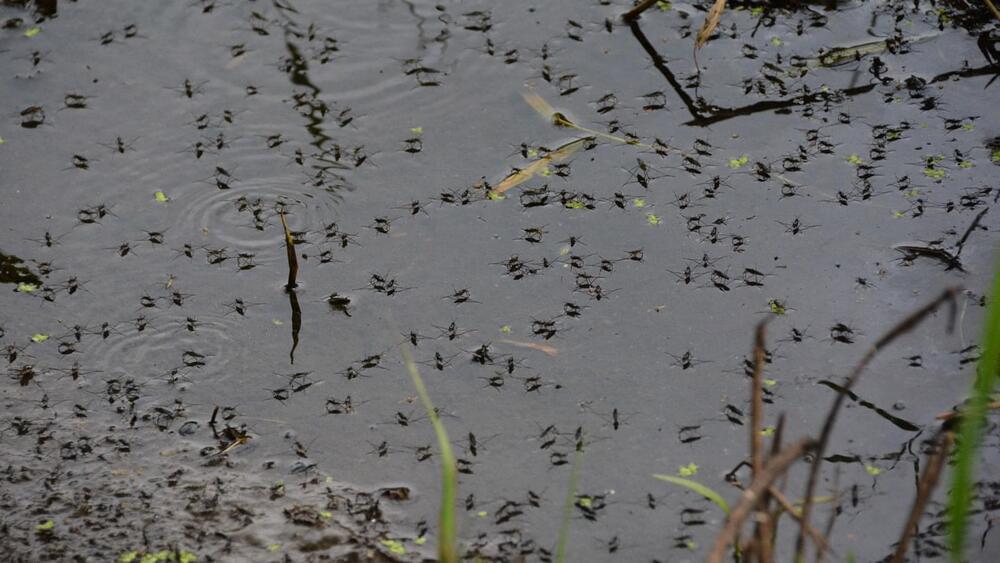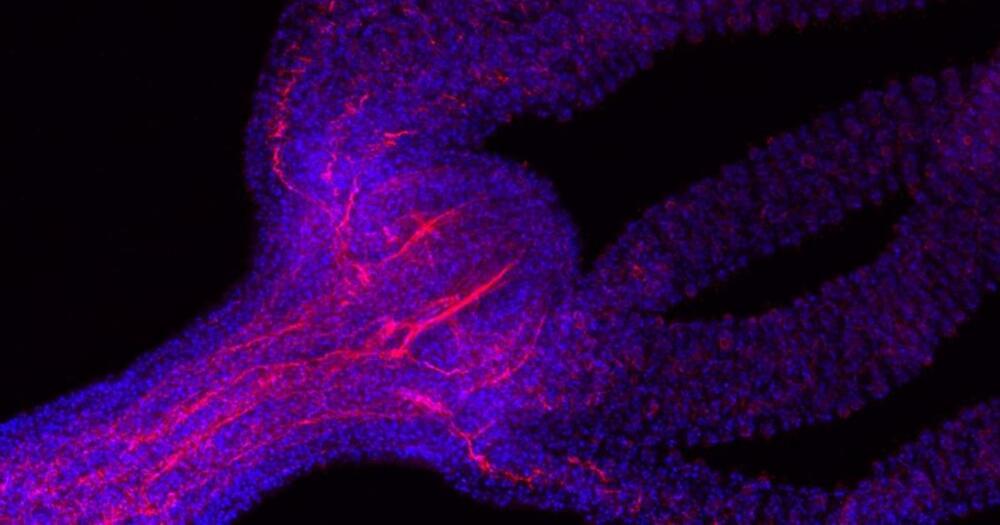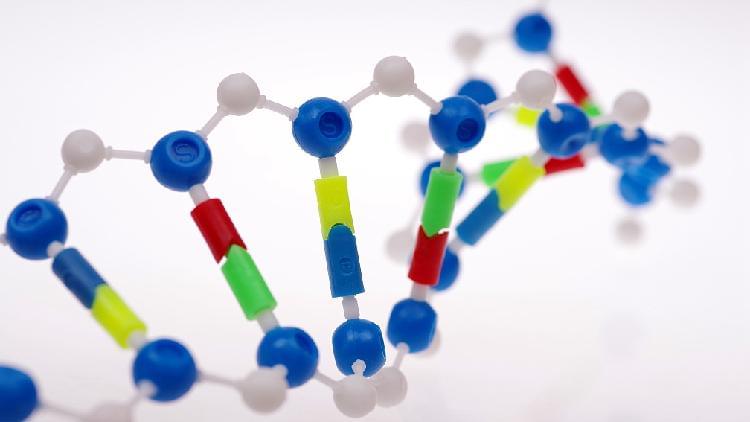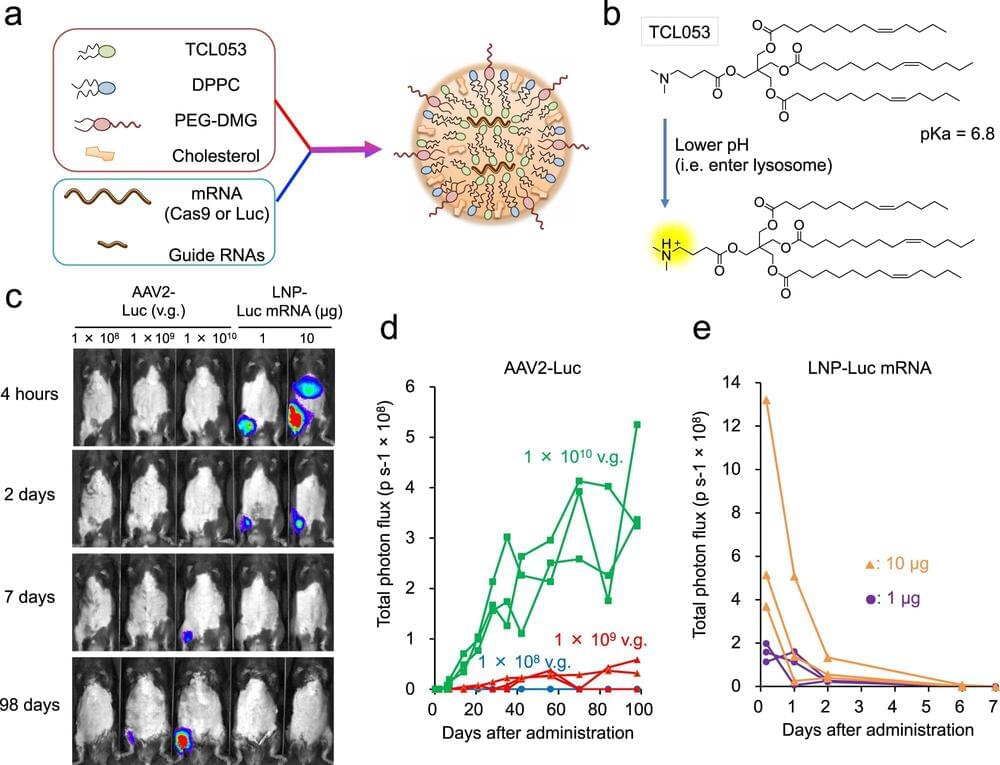In 1971, scientists turned to genetics to control disease-spreading mosquitoes without DDT. Today, there are a variety of pesticide-free methods.


Jamie Metzl is an author specializing in topics of genetic engineering, biotechnology, and geopolitics. Please support this podcast by checking out our sponsors:
- Mizzen+Main: https://mizzenandmain.com and use code LEX to get $35 off.
- NI: https://www.ni.com/perspectives.
- GiveDirectly: https://givedirectly.org/lex to get gift matched up to $300
- Indeed: https://indeed.com/lex to get $75 credit.
- Blinkist: https://blinkist.com/lex and use code LEX to get 25% off premium.
EPISODE LINKS:
Jamie’s Twitter: https://twitter.com/JamieMetzl.
Jamie’s Website: https://jamiemetzl.com/
Jamie’s lab leak blog post: https://jamiemetzl.com/origins-of-sars-cov-2/
Hacking Darwin (book): https://amzn.to/3lLqLsM
PODCAST INFO:
Podcast website: https://lexfridman.com/podcast.
Apple Podcasts: https://apple.co/2lwqZIr.
Spotify: https://spoti.fi/2nEwCF8
RSS: https://lexfridman.com/feed/podcast/
Full episodes playlist: https://www.youtube.com/playlist?list=PLrAXtmErZgOdP_8GztsuKi9nrraNbKKp4
Clips playlist: https://www.youtube.com/playlist?list=PLrAXtmErZgOeciFP3CBCIEElOJeitOr41
OUTLINE:
0:00 — Introduction.
1:27 — Lab leak.
1:00:01 — Gain-of-function research.
1:09:32 — Anthony Fauci.
1:19:14 — Francis Collins.
1:23:56 — Joe Rogan, Brett Weinstein, and Sam Harris.
1:53:53 — Xi Jinping.
2:08:24 — Patient Zero.
2:21:38 — WHO
2:45:28 — Government transparency.
3:07:28 — Likelihood of a cover-up.
3:09:16 — Future of reproduction.
3:44:55 — Jon Stewart.
3:50:14 — Joe Rogan and Sanjay Gupta.
4:15:19 — Ultramarathons.
4:25:21 — Chocolate.
4:33:34 — One Shared World.
4:48:37 — Hope for the future.
SOCIAL:
- Twitter: https://twitter.com/lexfridman.
- LinkedIn: https://www.linkedin.com/in/lexfridman.
- Facebook: https://www.facebook.com/lexfridman.
- Instagram: https://www.instagram.com/lexfridman.
- Medium: https://medium.com/@lexfridman.
- Reddit: https://reddit.com/r/lexfridman.
- Support on Patreon: https://www.patreon.com/lexfridman

Roche and its Genentech subsidiary have committed up to $12 billion to Recursion in return for using its Recursion Operating System (OS) to advance therapies in 40 programs that include “key areas” of neuroscience and an undisclosed oncology indication.
Recursion OS applies machine learning and high-content screening methods in what the companies said would be a “transformational” model for tech-enabled target and drug discovery.
The integrated, multi-faceted OS is designed to generate, analyze and glean insights from large-scale proprietary biological and chemical datasets—in this case, extensive single-cell perturbation screening data from Roche and Genentech—by integrating wet-lab and dry-lab biology at scale to phenomically capture chemical and genetic alterations in neuroscience-related cell types and select cancer cell lines.
Lex Fridman Podcast full episode: https://www.youtube.com/watch?v=K78jqx9fx2I
Please support this podcast by checking out our sponsors:
- Mizzen+Main: https://mizzenandmain.com and use code LEX to get $35 off.
- NI: https://www.ni.com/perspectives.
- GiveDirectly: https://givedirectly.org/lex to get gift matched up to $300
- Indeed: https://indeed.com/lex to get $75 credit.
- Blinkist: https://blinkist.com/lex and use code LEX to get 25% off premium.
GUEST BIO:
Jamie Metzl is an author specializing in topics of genetic engineering, biotechnology, and geopolitics.
PODCAST INFO:
Podcast website: https://lexfridman.com/podcast.
Apple Podcasts: https://apple.co/2lwqZIr.
Spotify: https://spoti.fi/2nEwCF8
RSS: https://lexfridman.com/feed/podcast/
Full episodes playlist: https://www.youtube.com/playlist?list=PLrAXtmErZgOdP_8GztsuKi9nrraNbKKp4
Clips playlist: https://www.youtube.com/playlist?list=PLrAXtmErZgOeciFP3CBCIEElOJeitOr41
SOCIAL:
- Twitter: https://twitter.com/lexfridman.
- LinkedIn: https://www.linkedin.com/in/lexfridman.
- Facebook: https://www.facebook.com/lexfridman.
- Instagram: https://www.instagram.com/lexfridman.
- Medium: https://medium.com/@lexfridman.
- Reddit: https://reddit.com/r/lexfridman.
- Support on Patreon: https://www.patreon.com/lexfridman
Try Dashlane here: https://www.dashlane.com/isaacarthur.
Get 10% off now with my promo code: isaacarthur.
Genetic Engineering and DNA alteration is an emerging technology with huge ramifications in the future, including potentially altering the DNA of adult humans, not just embryos or plants & animals.
Visit our Website: http://www.isaacarthur.net.
Support us on Patreon: https://www.patreon.com/IsaacArthur.
SFIA Merchandise available: https://www.signil.com/sfia/
Social Media:
Facebook Group: https://www.facebook.com/groups/1583992725237264/
Reddit: https://www.reddit.com/r/IsaacArthur/
Twitter: https://twitter.com/Isaac_A_Arthur on Twitter and RT our future content.
SFIA Discord Server: https://discord.gg/53GAShE
Listen or Download the audio of this episode from Soundcloud: Episode’s Audio-only version:
https://soundcloud.com/isaac-arthur-148927746/dna-manipulati…g-subjects.
Episode’s Narration-only version: https://soundcloud.com/isaac-arthur-148927746/dna-manipulati…ation-only.
Credits:
DNA Manipulation in Living Subjects.
Episode 227; Feb 27, 2020
Writers:
Isaac Arthur.
Editors:
Yesterday’s longevity AMA: michael lustgarten, phd.
Questionsabout yesterday’s video, and more…AMA!
Join us on Patreon!
https://www.patreon.com/MichaelLustgartenPhD
Timestamps:
0:51 Evaluating what’s optimal for biomarkers that are genetically low or high.
3:59 Details on replicating the approach.
6:59 EVOO
9:41 Carotid artery thickness scan.
10:55 Exercise routine.
18:26 Sirtuins, resveratrol and longevity.
19:31 Using blood testing to identify which supplements are detrimental, neutral, or beneficial at n=1
23:00 Devices that I use.
24:54 TG/HDL ratio.
26:47 Use of herbs, adaptogens.
30:00 Rapamycin.
33:23 Fish oil.
35:30 Other fish besides sardines?
37:12 Balance between taste and health.
38:00 Tracking starch intake?
40:50 Current macros.
42:32 Importance of thymus and immunosenescence.
45:04 Evaluating what’s optimal for dietary vitamin/mineral intake.
47:46 Taking time off from supplements before blood testing (or not)
49:52 Thoughts on genetic biomarkers.
51:32 Adding weights to the biomarkers/Are they all equal for their effects during aging.
57:20 Cinnamon vs biomarkers.
58:50 Managing the diet/approach in social settings.
1:00:30 Oils and cooking.
1:01:45 Biomarker weights.
1:03:05 Investigating factors surrounding thymus hypertrophy.
1:04:08 Liposomal delivery and aging.
1:06:52 Finding trusted sources for supplements.
1:08:00 Attia, Rhonda.
1:10:18 Not just focusing on cardio for health.
1:11:05 ION test.
1:15:00 What if I don’t beat the longevity record.
1:16:30 Where would I bet on anti-aging tech.
1:18:45 Liver detox.
1:19:36 How often I eat junk food.
1:21:10 Metformin.
1:22:50 Sauna.
1:24:41 Blood donation: impact on biological age?
1:25:25 Is there an upper limit for venous recovery after blood testing?
1:26:15 No cheat days for Christmas?
1:27:29 Next-generation biological age clocks?
1:31:09 Parabiosis.
1:33:19 CR and lymphocytes.
1:36:27 Protein intake.
1:40:08 Cortisol and hormones.
1:42:00 Blood pressure.
1:43:44 TruAge clock.
1:47:35 Noise in epigenetic testing.

The earliest genetic traces of Native American ancestry among Polynesians.
The peopling of Polynesia was a stunning achievement: Beginning around 800 C.E., audacious Polynesian navigators in double-hulled sailing canoes used the stars and their knowledge of the waves to discover specks of land separated by thousands of kilometers of open ocean. Within just a few centuries, they had populated most of the Pacific Ocean’s far-flung islands. Now, researchers have used modern DNA samples to trace the exploration in detail, working out what order the islands were settled in and dating each new landfall to within a few decades.
“The whole question of the settlement of Polynesia has been going on for 200 years,” says University of Hawaii, Manoa, archaeologist Patrick Kirch, who was not involved in the research. “This is a really great paper, and I’m happy to see it.”
Archaeologists already had hints of how this great exploration took place. Studying the styles of stone tools and carvings, as well as languages, of the people on the various islands had suggested the original ancestors traced back to Samoa and that the expansion ended halfway across the ocean in Rapa Nui, or Easter Island. But they disagreed on whether it happened in a few centuries, beginning around 900 C.E., or started much earlier and lasted 1 millennium or more.


Chinese scientists developed a targeted delivery system that can conduct precise gene-editing for inflammatory bowel disease. /CFP
Chinese scientists have developed a targeted delivery system that can bring gene-editing tools to colon cells, offering a precise cure for inflammatory bowel disease.
The study, published on Thursday in the journal Science Advances, reported a CRISPR-Cas9 prodrug nanosystem that can transport a gene-editing protein exclusively to inflammatory lesions in mice colons and then “switch on” the protein.

Many intractable diseases are the result of a genetic mutation. Genome editing technology promises to correct the mutation and thus new treatments for patients. However, getting the technology to the cells that need the correction remains a major challenge. A new study led by CiRA Junior Associate Professor Akitsu Hotta and in collaboration with Takeda Pharmaceutical Company Limited as part of the T-CiRA Joint Research Program reports how lipid nanoparticles provide an effective means for the delivery to treat Duchenne muscular dystrophy (DMD) in mice.
Last year’s Nobel Prize for Chemistry to the discoverers of CRISPR-Cas9 cemented the impact of genome editing technology. While CRISPR-Cas9 can be applied to agriculture and livestock for more nutritious food and robust crops, most media attention is on its medical potential. DMD is just one of the many diseases that researchers foresee a treatment using CRISPR-Cas9.
“Oligonucleotide drugs are now available for DMD, but their effects are transient, so the patient has to undergo weekly treatments. On the other hand, CRISPR-Cas9 effects are long lasting,” said Hotta.